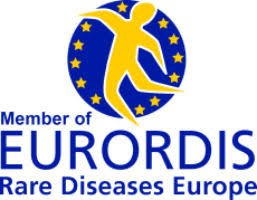Ring chromosome 20 epilepsy syndrome, also known as r(20) syndrome, is a rare chromosomal anomaly resulting from a break on each arm of chromosome 20 resulting in ring formation. In r(20) syndrome, the breakpoint of most patients is in the p13q13.33 region of chromosome 20. Two distinct forms are recognized, mosaic and non-mosaic ring chromosome 20 epilepsy syndrome. This syndrome is characterized by medically intractable epilepsy, nocturnal subtle seizures, behavioral problems and mild mental impairment. Unlike other chromosomal aberrations, dysmorphism (major or minor congenital malformation) is rarely reported.
This syndrome is undoubtedly an under-diagnosed condition. Dr. Borgaonkar and his colleagues at Johns Hopkins University first reported on 3 patients with ring chromosome 20 syndrome in 1976. Since then, only 60 cases of r(20) have been reported in literature. To date there is still no published data on the incidence and prevalence of this syndrome. This disorder appears to be pan-ethnic and non-gender specific. Cases of this syndrome have been reported from many different parts of the world involving different ethnicities. Almost all cases which have been reported are sporadic with no family history. However, with more widespread cytogenetic chromosomal karyotyping in non-etiological cases of epilepsy, more cases of r(20) will undoubtedly be recognized.(1,2,3 )
Epilepsy
Epilepsy is a constant feature of this syndrome and in many cases is intractable and drug resistant. Seizure frequency depends on percentage of mosaicism with almost 100% occurrence in the non-mosaic form. Seizures are complex partial in type and reported as episodes of sudden fear altered awareness with staring, oral automatisms, unspecified automatic behavior, focal motor symptoms and/or head turning. Subtle nocturnal behavioral changes such as stretching, rubbing and turning have been observed which resemble normal arousal behavior. In addition, subtle nocturnal seizures (SNS) and subtle nocturnal frontal lobe seizures (SNFLS) are also reported Seizures are often difficult to control with antiepileptic medications. 4, 5, 6, 7, 8 Nocturnal seizures are a frequent occurrence in this syndrome. Seizures can often be long in duration with waxing and waning intensity. Secondary generalized tonic clonic seizures are rarely seen.
Electroencephalography (EEG)
The Electroencephalographic (EEG) features of the cases of r(20) syndrome described in medical literature may show frequent bursts of sharply contoured theta waves and prolonged runs of high voltage frontally dominant slowing, intermixed with frontal spikes or sharp waves. EEG patterns in r(20) syndrome have been delineated as non-convulsive status epilepticus. These characteristic patterns may be combined with large portions of normal appearing EEG activity (9, 10). Prolonged runs of interictal bifrontal sharp and slow wave complexes are observed in prolonged sleep recordings and may represent a pathognomonic EEG pattern (11).
Cognition & Behavior
Cognition is usually normal before the onset of epilepsy, but there is the possibility of mental impairment if seizures are frequent and persistent. Individuals may have normal cognition despite periods of poorly controlled epilepsy and others may have profound learning disabilities and require help with all aspects of daily life. Behavioral problems can vary from minor concentration and attention difficulties with high levels of activity to profound problems. Several of the children reported in medical literature have been described to have periods of very difficult behavior often associated with poor seizure control. The behavior and cognitive difficulties do vary with time and may worsen with increasing seizures. However, the child may regain these lost skills with improved seizure control. .12
Features
Major and minor malformations including facial dysmorphism are subtle or absent in the mosaic form. Patients with non-mosaic ring 20 often have dysmorphic features and short stature. In contrast patients with the more common mosaic form appear physically normal. This lack of dysmorphic features in mosaic ring 20 syndrome and omission of chromosomal testing in patients leads to delayed diagnosis (13). Rare cases of mosaic r(20) syndrome with dysmorphic features published in literature consisted of microcephaly (head circumference is smaller than normal because brain has not developed properly or has stopped growing), plagiocephaly (deformed skull), dental malocclusions (misalignment of teeth and/or incorrect relation between the teeth of the two dental arches), micrognathia (is an abnormal smallness of the lower jaw), cauliflower-shaped ears, and coarse facial features with slanting eyelids (obliquely downward and outward). 14, 15
Ring chromosome 20 epilepsy syndrome is often diagnosed as idiopathic/ cryptogenic (no etiology identified) partial frontal lobe epilepsy disorder. Can also be confused with other epilepsy syndromes, most notably Lennox-Gastaut syndrome (LGS) which is characterized by medically refractory mixed intractable seizures. Unlike LGS, seizures in r(20) epilepsy syndrome cause frequent, violent, brief seizures at night, usually beginning in childhood. Unlike r(20) syndrome the seizures in autosomal dominant nocturnal frontal lobe epilepsy (ADNFE) can be easily controlled with antiepileptic drugs. The nocturnal EEG pattern in r(20) may also have overlapping features of continuous spike and wave discharges during slow wave sleep (CSWS) and electrical status epilepticus in sleep (ESES). 16, 17
Diagnosis
Diagnosis of ring chromosome 20 syndrome can be made by recognition of certain characteristic clinical features; however, definitive diagnosis requires chromosomal testing of the affected person’s cells. This is most easily done by looking at the chromosome pattern (karyotype) in blood cells but any other tissue including skin could be examined. Since chromosomal analysis or karyotype testing is not a routine investigation when epilepsy first presents, the diagnosis of r(20) syndrome may be delayed or go unrecognized. In other words, some people with difficult to control epilepsy may have a ring chromosome 20 but be unaware of it. Patients with the non-mosaic r(20) are often diagnosed earlier because of the presence of dysmorphic features and developmental delay leading to early chromosomal testing. Almost all parents of individuals with r(20) syndrome have no evidence of r(20) syndrome in their own blood chromosome analysis. A few individuals, typically relatives of affected patients , have been found to have a ring chromosome 20 without any evidence of symptoms. Why these people are protected against development of epilepsy remains unknown. Newer genetic testing such as chromosomal microarray (CMA) will not detect this syndrome as structural aberration cannot be detected by this method. Neuroimaging studies and metabolic studies are unrevealing in this disorder. 18 ,19 20, 21, 22. Video-EEG monitoring is valuable in diagnosis and identification of characteristic EEG patterns. Invasive EEG monitoring with intracranial electrodes is not indicated as no discrete epileptic focus is expected to be detected in a chromosomal syndrome.
Treatment
Management of children with r(20) is symptomatic. Seizure control is very important. Seizures are typically difficult to treat. Overall treatment is more challenging in patients with non-mosaic form. In mosaic forms response to treatment may inversely correlate with percentage of mosaicism. Antiepileptic drugs (AEDs) are the mainstay and first line of treatment as is for other intractable epilepsy syndromes. From the study of published literature, no one drug seems to be better than any other drug and patients are frequently exposed to multiple antiepileptic drugs. In addition treatment response does not differ between older and newer AEDs. Unfortunately seizures are difficult to control with antiepileptic medication and may require consideration of alternative treatments.
Other alternates to antiepileptic drug treatment are ketogenic diet (KD) and vagus nerve stimulation (VNS). Epilepsy surgery is not an option. Epilepsy in r(20) syndrome is not amenable to resective surgery because of a lack of discrete epileptic areas. Vagus nerve stimulation has been successful in a few cases reported in the literature. KD is a high fat, low carbohydrate diet used for other intractable childhood epilepsies. There are no published reports on use of ketogenic diet in patients with r(20) syndrome, however its efficacy and safety is well established in other intractable epilepsies like Lennox-Gastaut syndrome. The role of other unconventional treatments of epilepsy is not established for the treatment of r(20) syndrome20 23, 24,25
The long term outcome of the syndrome is not known. It is not lethal, however a patient who has frequent epileptic seizures is at risk of other complications of epilepsy including status epilepticus and sudden unexpected death in epilepsy (SUDEP). The best predictor is likely to be the degree of seizure control.
Conclusion:
Ring Chromosome 20 is a refractory partial epilepsy syndrome with frontal lobe features. Two distinct forms are recognized the more common mosaic and the rare non-mosaic form. Patients with mosaic form do not have dysmorphism leading to delayed chromosomal testing and delayed diagnosis. In contrast non-mosiac form have developmental delay and dysmorphisms leading to early chromosomal testing and earlier diagnosis. Definitive diagnosis can only be established by conventional chromosomal karyotyping with mosaic screening. No deletion of genetic material is seen in the mosaic forms. Deletions have been reported in patients with the non-mosaic patients. Treatment is often difficult with continued medically refractory seizure with overall better prognosis in the mosaic type.
References
- Borgaonkar DS, Lacassie YE, Stoll C. Usefulness of chromosome catalog in delineating new syndromes. Birth Defects Orig Artic Ser. 1976;12(5):87-95.↑
- Hosain S, Ring Chromosome 20 Epilepsy syndrome: Review. Advances in clinical neuroscience and Rehabilitation Volume 9: Number 1, March April 2009.
- Hosain S, Conlin L, Spinner N. Ring Chromosome 20 Epilepsy syndrome. An Overview.J Pediatric Epilepsy: Vol 1, (1) 2011.
- Augustijn PB, Parra J, Wouters CH, Joosten P, Lindhout D, van Emde Boas W. Ring chromosome 20 epilepsy syndrome in children: electroclinical features. Neurology. 2001 Sep 25;57(6):1108-11.↑
- Inoue Y, Fujiwara T, Matsuda K, Kubota H, Tanaka M, Yagi K, Yamamori K, Takahashi Y.Ring chromosome 20 and nonconvulsive status epilepticus. A new epileptic syndrome. Brain. 1997 Jun;120 ( Pt 6):939-53.↑
- Canevini MP, Sgro V, Zuffardi O, Canger R, Carrozzo R, Rossi E, Ledbetter D, Minicucci F, Vignoli A, Piazzini A, Guidolin L, Saltarelli A, dalla Bernardina B. Chromosome 20 ring: a chromosomal disorder associated with a particular electroclinical pattern. Epilepsia. 1998 Sep;39(9):942-51.↑
- de Falco FA, Olivieri P, de Falco A, Concolino D, Battaglia F, Verardi R, Grande G, Stabile M. Electroclinical evolution in ring chromosome 20 epilepsy syndrome: a case with severe phenotypic features followed for 25 years. Seizure. 2006 Sep;15(6):449-53. Epub 2006 Jun 27.↑
- Ville D, Kaminska A, Bahi-Buisson N, Biraben A, Plouin P, Telvi L, Dulac O, Chiron C. Early pattern of epilepsy in the ring chromosome 20 syndrome. Epilepsia. 2006 Mar;47(3):543-9.↑
- Kobayashi K, Ingaki M, Sasaki M, Sugai K, Ohta S, Hashimoto T. Characterstic EEG findings in ring 20 syndrome as a diagnosis. Electroencephalography Clin Neurophysiol 1998 Oct:107 258-262.↑
- Petit J, Roubertie A, Inoue Y, Genton P. Non-convulsive status in the ring chromosome 20 syndrome: a video illustration of 3 cases. Epileptic Disord. 1999 Dec;1(4):237-41.↑
- Daber R, Conlin L, Leonard L, Hosain S, Spinner N. Ring Chromosome 20. Review. Am J of medical genetics. (2012).
- Herrgard E, Mononen T, Mervaala E, Kuusela L, Aikia M, Stenback U, Paakkonen L, Airaksinen RL, Kalviainen R. More severe epilepsy and cognitive impairment in the offspring of a mother with mosaicism for the ring 20 chromosome. Epilepsy Res. 2007 Jan;73(1):122-8.↑
- Conlin L, Kramer W, Hutchinson A, Li X, Reithman H, Scheffer I, Berkovic S, Hosain S, Spinner N, Molecular analysis of ring chromosome 20 syndrome reveal 2 distinct group of patients. J Med Genetics: 10:1136/jmg.2010
- Garcia DM, Ortiz R, Gomez A, Barriuso E. Ring 20 chromosome syndrome with epilepsy and dysmorphic features: a case report. Epilepsia. 2001 Dec;42(12):1607-10.↑
- Macleod S, Mallik A, Tolmie JL, Stephenson JB, O’Regan ME, Zuberi SM.
Electro-clinical phenotypes of chromosome disorders associated with epilepsy in the absence of dysmorphism. Brain Dev. 2005 Mar;27(2):118-24.↑ - Combi R, Dalpra L, Tenchini ML, Ferini-Strambi L. Autosomal dominant nocturnal frontal lobe epilepsy. A critical overview. J Neurol 2004 Aug; 251(8): 923-34↑
- Steinlein, OK, Mulley JC, Propping P, Wallace RH, Phillips HA, Sutherland GR, Scheffer IE, Berkovic SF. A Missense Mutation in the Neuronal Nicotinoc Acetylcholine Receptor Alpha for Subunit is Associated with Autosomal Dominant Nocturnal Frontal Lobe Epilepsy. Nat Genet 1995 11: 201-203↑
- Kosztolanyi, G. Does “ring syndrome” exist? An analysis of 207 case reports on patients with a ring autosome. Hum Genet. 1987 Feb;75(2):174-9. 12.↑
- Serrano-Castro PJ, Aguilar Castillo MJ. Regarding: ‘Mosaicism and seizure onset in ring chromosome 20 syndrome’. Acta Neurol Scand. 2005 Sep;112(3):202;↑
- Yamadera H, Kobayashi K, Sugai K, Suda H, Kaneko S. A study of ring 20 chromosome karyotype with epilepsy. Psychiatry Clin Neurosci. 1998 Feb;52(1):63-8. Review. ↑
- Garcia-Cruz D, Vasquez AI, Perez-Rulfo D, Davalos NO, Penaloza J, Garcia-Ortiz JE, Patino-Garcia B, Sanchez-Corona J. Ring-20-syndrome and loss of telomeric regions. Ann Genet. 2000 43(3-4): 113-6↑
- Nishiwaki T, Hirano M, Kumazawa M, Ueno S. Mosaicism and phenotype in ring chromosome 20 syndrome. Acta Neurol Scand. 2005 Mar;111(3):205-8↑
- Alpman A, Serdaroglu G, Cogulu O, Tekgul H, Gokben S, Ozkinay F. Ring chromosome 20 syndrome with intractable epilepsy. Dev Med Child Neurol. 2005 May;47(5):343-6.↑
- Parr JR, Pang K, Mollett A, Zaiwalla Z, Selway R, McCormick D, Jayawant S.Epilepsy responds to vagus nerve stimulation in ring chromosome 20 syndrome. Dev Med Child Neurol. 2006 Jan;48(1):80 ↑
- Chawla J, Sucholeiki R, Jones C, Silver K. Intractable epilepsy with ring chromosome 20 syndrome treated with vagal nerve stimulation: case report and review of the literature. J Child Neurol. 2002 Oct;17(10):778-80.↑







